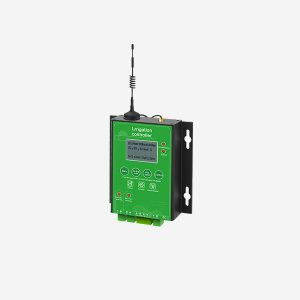Product Introduction
Irrigation control valve has two types: DC solenoid valve and pulse solenoid valve, which can realize circuit control and manual control. It can be used with water and fertilizer integrated machine and irrigation controller to realize water and fertilizer integrated automatic irrigation. Irrigation solenoid valve switches smoothly and effectively prevents water hammer.

Irrigation control valve Features
(1)The opening and closing are stable, effectively preventing water hammer, low power electromagnetic coil, large working pressure range, large flow rate, small head loss, stable opening and closing, effectively preventing water hammer and protecting pipeline.
(2)The plane design of the joint of pipe fittings can make the rubber waterproof washer play a role and avoid the problem of water leakage due to improper winding of raw material belt.
(3)The solenoid valve is made of 4.7MM PEDM synthetic rubber diaphragm, PA66 reinforced nylon valve body, pressure resistant, sun proof and frost resistant

Irrigation control valve Parameters
| Parameter name | Parameter content |
|---|---|
| waterproof level | IP68 |
| Body material | Reinforced nylon (PA66) |
| Operating temperature | 0~60°C |
| Diaphragm material | Three yuan Z propylene rubber (EPDM) |
| Operating Voltage | Pulse valve: DC12-40V DC valve: DC12V |
How to use Irrigation control valve ?
When the irrigation solenoid valve is powered on, the valve stem is lifted by the electromagnetic force, and the pilot valve port is opened. At this time, the upper chamber of the solenoid valve relieves the pressure through the pilot hole, forming a high and low pressure difference around the main valve core. Under the effect of the pressure difference, the fluid pressure pushes the main valve core upward to open the main valve port; when the power is off, under the effect of the spring force and the gravity of the main valve core, the valve stem is reset, the pilot hole is closed, and the main valve core moves downward, The main valve port is closed; the pressure in the upper chamber of the solenoid valve increases, and the fluid pressure pressurizes the main valve core, so the sealing is better.

(1) DC solenoid valve
When the valve is powered on, the electromagnetic force is generated by the electromagnetic coil to lift the closing part from the valve seat, and the valve opens; when the valve is powered off, the electromagnetic force disappears, and the spring presses the closing part on the valve seat, and the valve closes. The power-off valve automatically closes, effectively avoiding the waste of water resources and excessive irrigation.
(2) Pulse solenoid valve
When receiving the positive pulse signal, the solenoid moves the closing part to a (BC connected), and the valve remains open; when receiving the negative pulse signal, the solenoid moves the closing part to C (AB connected), and the valve remains closed.When only sending pulse signal, a small amount of power consumption and low power consumption are more secure.
Application
Irrigation solenoid valve is suitable for agricultural field, greenhouse, water-saving irrigation, landscaping, breeding, seedling, fertilization, environmental protection equipment, water reuse, water supply, gardening, circulating water and other liquid media.
FAQs
1.How many acres of land can a device control? How many solenoid valves can an irrigation controller match?
The controller has nothing to do with the area, the irrigation area depends on the size of the pump; One irrigation controller is used with two solenoid valves.
2. Is this kind of solenoid valve expensive?
We are a pioneer in the field of intelligent irrigation, focusing on technology research and development, equipment manufacturing and application promotion of agricultural Internet of Things system engineering. We have a professional sales manager according to your needs, detailed quotation.
3. How long is the warranty period for the equipment?
Equipment is usually guaranteed for one year. Users can also apply to return the equipment to the factory for maintenance after the warranty period ends. The user pays for the repairs.



Reviews
There are no reviews yet.